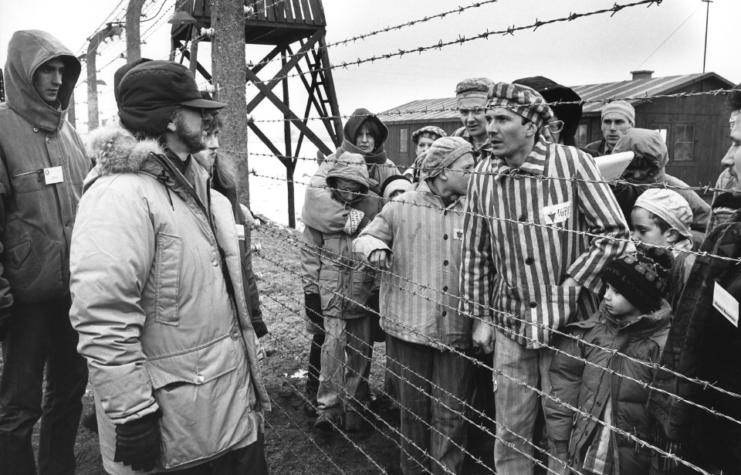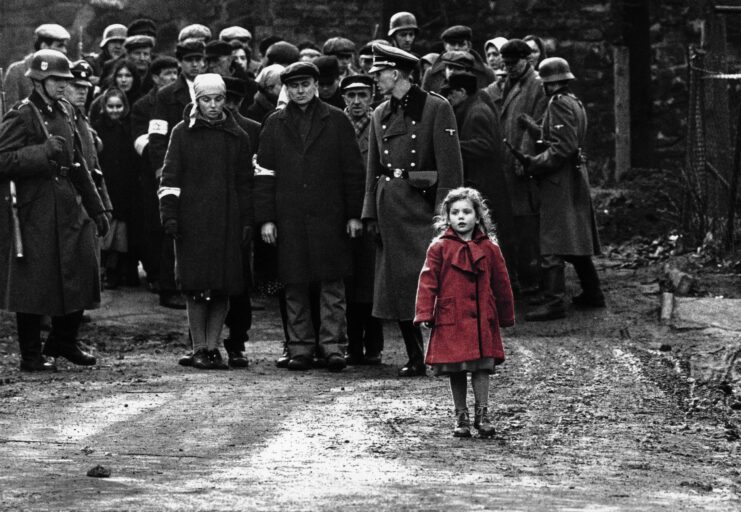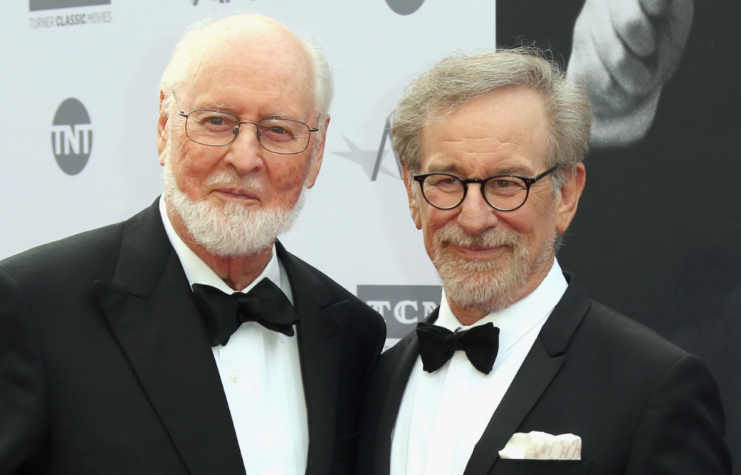Steven Spielberg’s Schindler’s List (1993) is a powerful and profoundly moving historical drama based on the true story of Oskar Schindler, a German businessman who saved the lives of over a thousand Polish-Jewish refugees during the Holocaust. The film is widely regarded as one of the most significant cinematic works about World War II and has had a lasting impact on audiences worldwide. The following are six behind-the-scenes facts about Schindler’s List that you might not have known.
Steven Spielberg initially didn’t want to direct Schindler’s List

Our first fact is that Steven Spielberg was initially reluctant to direct Schindler’s List. He’d known of the story since the 1980s, after reading Thomas Keneally’s Schindler’s Ark, but, despite becoming a household name by directing Jaws (1975), E.T. the Extra-Terrestrial (1982) and the Indiana Jones franchise, he believed he wasn’t prepared, nor mature enough to make a movie with such an important and monumental story.
Spielberg first approached Roman Polanski to direct the feature. The director himself was a Holocaust survivor and a relative of one of the Schindlerjuden, or “Schindler Jews” – the Jews Oskar Schindler saved. He ultimately turned down the film because it was too personal.
Other directors who were considered include Sidney Lumet, Billy Wilder, Sydney Pollack and Martin Scorsese. It wasn’t until the filming of Hook (1991) that Spielberg decided he was ready.
Steven Spielberg donated all his earning from Schindler’s List

After deciding to take on the monumental task of directing Schindler’s List, Steven Spielberg made the decision not to receive payment for the film, describing it as “blood money.”
Spielberg also decided that all of his royalties and residuals from it would be donated to the Survivors of the Shoah Visual History Foundation, a non-profit organization he himself established in 1994. Today known as the USC Shoah Foundation – The Institute for Visual History and Education, it records and preserves the testimonies of genocide survivors.
Liam Neeson as Oskar Schindler

Liam Neeson famously portrayed Oskar Schindler in the film. That being said, he wasn’t Steven Spielberg’s first choice. A number of famous actors, including Robert Duvall, Daniel Day-Lewis, Kevin Costner, Mel Gibson, Stellan Skarsgård and Bruno Ganz, were considered for the role. Although Spielberg dropped him, Warren Beatty was also considered, with the director once saying, “Warren would have played it like Oskar Schindler through Warren Beatty.”
Knowing Spielberg from the Indiana Jones films, Harrison Ford was also considered. He ultimately turned down the role because he didn’t want his name or popularity to take away from the story and its importance. Spielberg agreed and chose the relatively unknown Neeson to take on the lead role.
In an interview with The New York Times, Spielberg said, “Liam was the closest in my experience of what Schindler was like. His charm, the way women love him, his strength. He actually looks a little bit like Schindler, the same height, although Schindler was a rotund man. If I had made the movie in 1964, I would’ve cast Gert Frobe, the late German actor. That’s what he looked like.”
In preparation for the role, Spielberg had Neeson study recordings of Schindler and the gestures of former Time Warner Chairman Steven J. Ross.
Ralph Fiennes terrified a Holocaust survivor

Ralph Fiennes portrayed Krakow-Płaszów’s camp commandant, Amon Goeth, in Schindler’s List. Steven Spielberg chose Fiennes because of his “evil sexuality.” In preparation for the film, the actor gained 28 pounds to look more like the real Goeth, achieving the weight gain by mainly drinking Guinness.
During filming, Holocaust survivor Mila Pfefferberg was on set meeting members of the cast. When she met Fiennes, she began shaking uncontrollably because he reminded her of the real Goeth.
The ‘Girl in the Red Coat’ broke her promise to Steven Spielberg

It’s a known fact that Schindler’s List was filmed in black and white. However, there’s one instance of color in the movie, and it’s when the “Girl in the Red Coat” appears during the liquidation of the Kraków ghetto. This was intentional on Steven Spielberg’s part, as he wanted to use the character to show the individuality of those who became victims of the Holocaust.
The role was portrayed by Oliwia Dabrowska, who was just three years old when she was cast in Schindler’s List. At the end of filming, Spielberg had made her parents promise not to allow Dabrowska to watch the film until she was 18 – a vow she broke when she was 11.
The experience shook her, and she became ashamed of having been a part of the feature. However, she’s since accepted the role she played and has become proud of what her character symbolizes, going so far as to hang a still of the scene in her home.
Cheering everyone up on set

Making Schindler’s List was not a fun experience. The film’s content made the cast and crew depressed and in need of cheering up. To accomplish this, Steven Spielberg asked Robin Williams to entertain everyone with jokes and sketches over speakerphone. The director recalled, “Robin knew what I was going through. He would do 15 minutes of stand-up on the phone. I would laugh hysterically… he’d always hang up on you on the loudest, best laugh you’d give him. Drops the mic, that’s it.”
At the same time, Williams was working on material for his role as Genie in Aladdin (1992). This allowed him to try out his new material for the Disney film.
Spielberg also found watching episodes of Seinfeld (1989-98) helped cheer him up. After hearing this, Jerry Seinfeld included references to the film in the two-part episode “The Raincoats.” In it, Jerry and Rachel watch Schindler’s List, but make out throughout the movie, instead of watching it.
John Williams didn’t think he could write the score for Schindler’s List

John Williams is undoubtedly one of, if not the, greatest composers of our time. Many movies, including the Star Wars and Indiana Jones franchises, would be very different if they didn’t have Williams-composed soundtracks.
Initially, Schindler’s List wasn’t going to have a Williams score because the composer didn’t think he was good enough to write one that matched what he saw. Williams was incredibly moved by the film and told Steven Spielberg that a better composer was needed to do it justice. Spielberg responded, “I know, but they’re all dead.”
More from us: Dale Dye Ensured These Military Movies Were As Authentic As Possible
With that, Williams went to work writing the score for the film, which received the Academy Award for Best Original Score.
